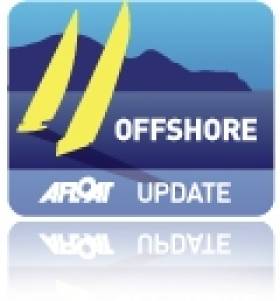Displaying items by tag: Velux
Ocean Sprint 4 gets underway in World Offshore Race
In one of the closest starts of the round the world race so far, all four boats blasted across the line in Punta del Este bay within a few minutes of each other. Gutek laid down his intentions for the race ahead rounding the first mark ahead of the fleet but close behind were Le Pingouin, Derek Hatfield's Active House and Chris Stanmore-Major's Spartan.
With the sun beating down and a south south-easterly breeze of around 10 knots, conditions were near perfect for the start of the fourth of five ocean sprints which will take the solo sailors 5,700 nautical miles to Charleston on the east coast of the US. Hundreds of people lined the breakwater in Marina Punta del Este to wish farewell to the skippers following a successful stopover in the Uruguayan resort, the fourth time Punta del Este has hosted the race.
A completely different beast to the past two Southern Ocean legs, ocean sprint four will see tactics become more important than ever as the skippers battle their way north through the St Helena High before facing the Doldrums for the second time since the race started in La Rochelle back in October. Once across the Equator the fleet will then pick up the north easterly tradewinds allowing the skippers to take a relatively direct course towards Charleston.
A new addition for ocean sprint four is the option to use 'stealth mode', enabling each skipper's position to be hidden from their rival racers and the public for 24 hours. Skippers will be allowed to enter stealth mode twice during the leg, but not in the first 48 hours of racing or within 500 nautical miles from the finish line. When a skipper enters stealth mode his position on the VELUX 5 OCEANS race viewer will be frozen for 24 hours.
The VELUX 5 OCEANS is the oldest single-handed round the world yacht race. Run every 4 years since 1982, the race is the longest and toughest event for any individual in any sport. The race is a series of five high-pressure ocean sprints within a marathon circumnavigation. The 30,000 route takes the sailors from La Rochelle FR to Cape Town SA, then onto Wellington NZ, Punta del Este Uruguay, Charleston USA and back to La Rochelle FR, for the finish.





























































